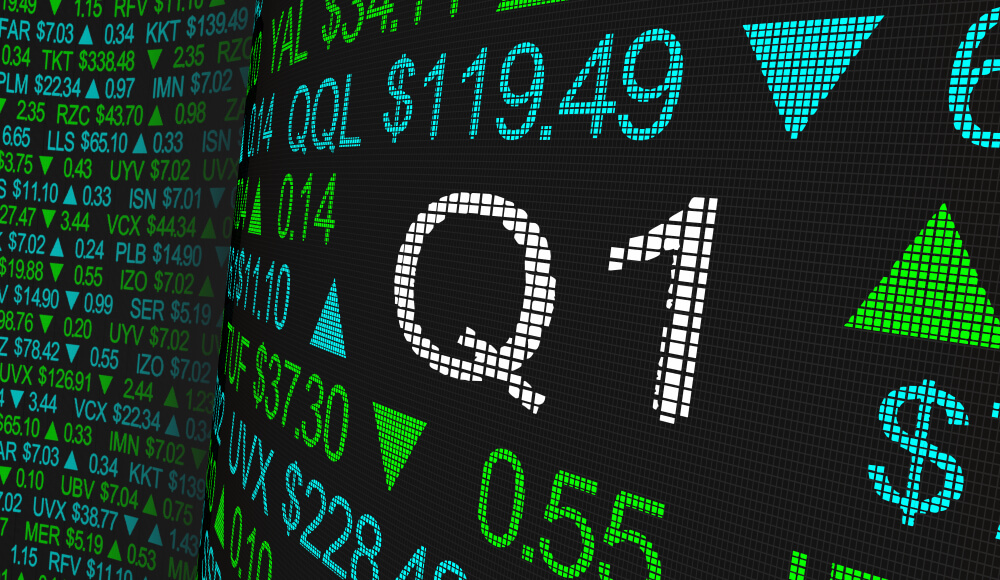We are halfway through earnings season for the first quarter (Q1) and, according to FactSet, 65% of S&P 500 companies have reported a positive earnings-per-share surprise.
However, earnings are down and expected to get worse heading into the second half of the quarterly earnings season.
Banyan Hill Publishing’s Brian Christopher said the price-to-earnings ratio for S&P 500 companies will fall well below what analysts project.
“Analyst consensus is that 2020 earnings for the S&P 500 will only fall 15.5%,” Christopher, a former controller for a Fortune 100 company, said. “When I saw that, it knocked me off my chair. It’s way too optimistic. They’ll fall more than that.”
Where Q1 Earnings and Revenue Stand Now
As of May 1, the earnings decline for the S&P 500 is minus-13.7%. According to FactSet, if that trend holds, it will be the largest year-over-year decline in earnings since the third quarter of 2009.
Seven sectors of the S&P 500 have a lower growth rate today compared to a month ago. That is attributed to a drop in earnings-per-share revisions and negative EPS surprises.

Banyan Hill’s Brian Christopher
Something else to consider is the price-to-earnings ratio of the S&P 500 was 22.2 on Feb. 19, 2020.
“The market was too expensive,” Christopher said. “It was rising even though an emerging virus had tranquilized China. It fell 34% over the next 23 trading days, to its March 23 bottom.”
Now, that price-to-earnings ratio is hovering around 18, making it cheaper today than it was at its high.
But Christopher said you can’t trust that. The fact remains that only 65% of S&P 500 companies have beaten Q1 earnings-per-share estimates — that’s below the five-year average.
On top of that, companies are reporting Q1 earnings that are just 2.5% above expectations — another five-year low.
As for revenue, companies only reported a blended growth rate of 0.7%. That has been driven by positive earnings surprises in information technology, health care and energy sectors.
“If 0.7% is the actual growth rate for the quarter, it will mark the lowest year-over-year growth in revenue for the index since Q2 2016 (-0.2%),” FactSet senior earnings analyst John Butters said.
Why It Will Get Worse Before It Gets Better
One of the main reasons Christopher expects earnings to be worse is because most companies are flying blind thanks to the coronavirus pandemic that has closed off much of the global economy.
“We’re fighting a disease we’ve never encountered on this scale. No one knows how long it will take to ‘get back to work,’” Christopher said. “And our global supply chain has become interconnected. A single disruption for Apple could slam the market by 10%.”
He also points to Berkshire Hathaway Inc. (NYSE: BRK.B) CEO Warren Buffett’s virtual shareholder meeting held over the weekend.
“Buffett said he believes in the long-term prospects for the stock market. He said little about the short term. For him, that non-recommendation is bearish,” Christopher said. “His lack of activity in this market is more telling than any consensus analyst estimate you read. After all, Berkshire Hathaway has $137 billion of cash to put to work … when it’s ready to.”
What Investors Should Do Now
The biggest message to investors now is to wait.
“The theory that earnings will be decent is pulling this stock market up,” Christopher said. “When the market realizes the error of the analysts that cover it, it will pull back.”
He suggests investors formulate a plan by making a list of companies they would love to own and write down the price they are willing to pay. Then wait because it’s more important now to be selective with investments.





